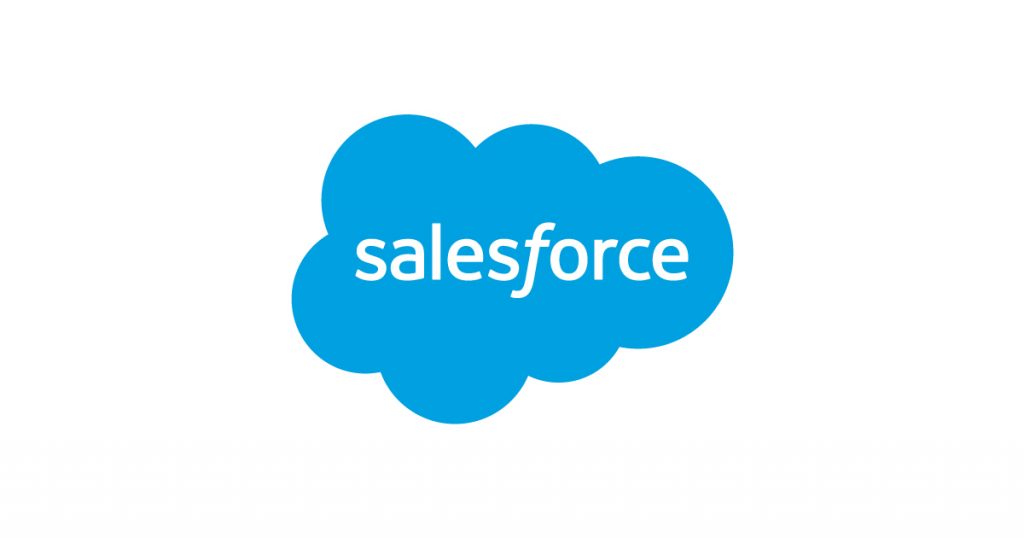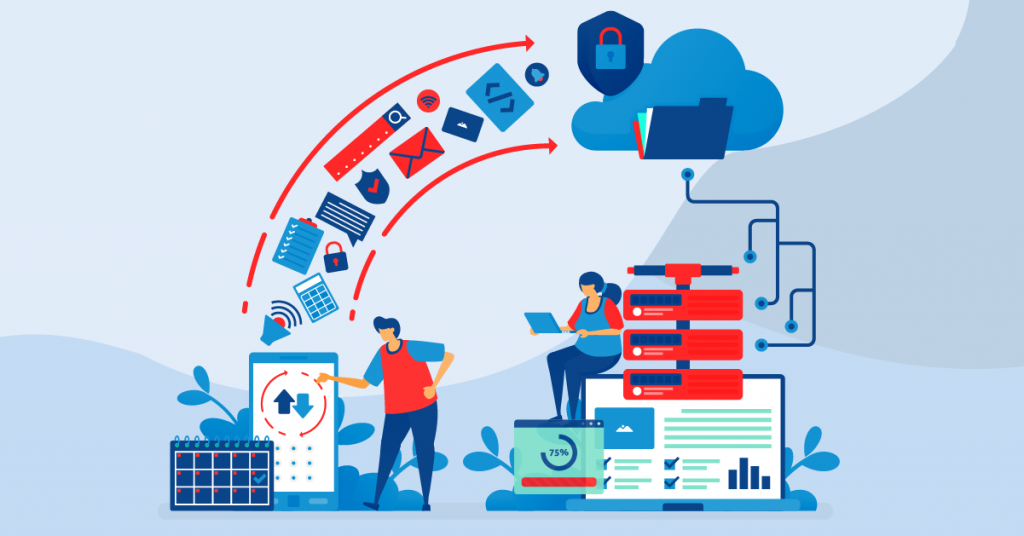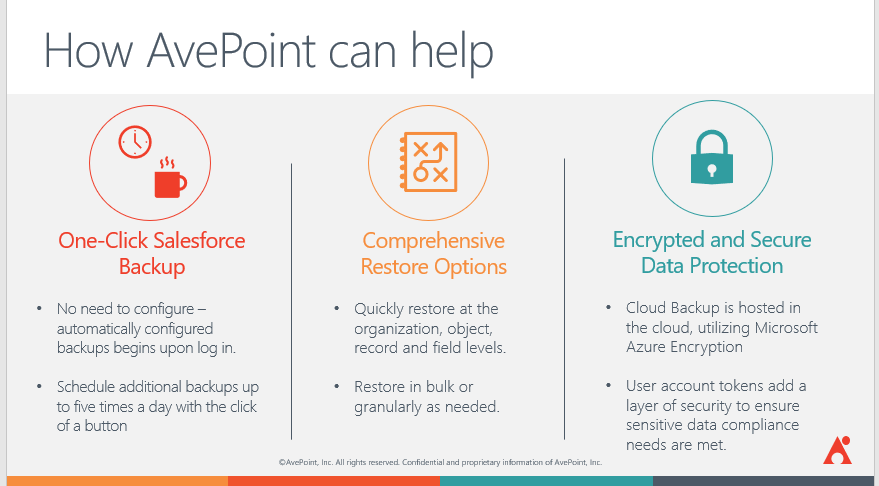Salesforce Retires Data Recovery Service Making Third-Party Backup Solutions Critical


Salesforce Will No Longer Restore Your Data
On July 31st, 2020, Salesforce is no longer offering its Data Recovery Service to customers. On its website, the SaaS CRM platform provider admitted “the Data Recovery Service had reached its end-of-life“ due to the length of time and reliability of the process.”
Essentially, restoring lost data cost $10,000, took more than 6 weeks, and the results were not always 100%.
This highlights an important reason why organizations cannot depend on their SaaS provider to backup and restore their data. Waiting weeks for critical data to be restored is just not an option for most organizations.
Some of these risks and inefficiencies were pointed out in the Forrester report, “Backup up your SaaS Data—Because Most SaaS Providers Don’t,” and it’s worth a read (paywall).

As the report points out, virtually all SaaS providers state it’s the customer’s job to back up their SaaS data. The problem is that they mention it in the fine print of their SLAs rather than their marketing materials.
That is why IT professionals need to carefully consider their backup policies and requirements, compare to the SLAs of the SaaS platforms hosting critical data (Salesforce, Dynamics, Office 365, etc.), and identify if any gaps need to be covered. Specifically, you will want to consider the RPO (what you want to cover and in what granularity) and RTO (time to restore/recover).
This blog post will help you do just that by examining:
- What data you should back up in Salesforce
- How often you should be backing data up in Salesforce
- Common reasons for losing data and why you need Salesforce backup
- The best backup methods in native Salesforce
- How to automate Salesforce backup with AvePoint
- Why AvePoint is the best Salesforce backup solution and tool

What Data Should You Back Up In Salesforce?
Organizations should back up all the main data types in Salesforce including Accounts, Contacts, Leads, Opportunities, Cases, and Contracts. This should also include any custom object records, files, content, and Chatter within the platform. Sandbox environments should also be backed up.
However, backing up the data alone is not sufficient for most organizations. Many companies invest in developing tailored configuration settings, custom fields, page layouts, reports, and dashboards to maximize their efficiency and support key integrations. This metadata also needs to be backed up.
The ability to back up and restore metadata was a common gap many organizations experienced (painfully) with native Salesforce backup options even when the Data Recovery service was available. Even if the data was restored, operations were still disrupted. Business users didn’t have their dashboard or reports and they were not happy.
Another important and distinct question to answer is: What data will you need to restore in Salesforce? Here granularity is key.
Looking for a way to backup your Salesforce data? Check out this post: Click To TweetOn occasion you may want to restore an entire organization, but it’s more likely that you will be restoring singular items for users. Having the ability to restore an object, record, and even a single field prevents you from having to roll back changes made across the platform in the time since the last backup point.
How Frequently Should You Backup Salesforce?
Considering how many records are updated every hour in your platform, and that each record lost is estimated to cost an organization between $200 to $400, backing up multiple times a day will make sense for many medium-to-large organizations (and even some smaller ones!).
Common Reasons for Lost Data and Why You Need Salesforce Backup
Salesforce is an organization’s Rolodex. If you don’t have a comprehensive history and contextual information on your customers then your relationship is essentially starting from square one.
Multiple departments, from marketing to accounting, integrate with the platform to automate some of their operations.
![]()
Not only is the data important, but there are many common Salesforce data loss scenarios that organizations experience every day. These include:
- User Error–As Salesforce says on their website, “Even with the best of intentions, users and administrators have been in situations where they have either deleted large amounts of data, or have modified records, only to later realize that a mistake was made.” One especially easy way to do this is by deleting an object, which will automatically delete the records within that object. For example, if you delete an account than the contacts in that account will also be deleted.
- Admin Error—It’s also easy for administrators or developers to accidentally delete or unintentionally modify key metadata such as configuration settings, custom fields, layouts, or dashboards. Even prior to the retirement of the Data Recovery Service, this data was not automatically backed up and able to be restored with native functionality.
- Integrations With Other Apps—Third-party applications, depending on their configuration and implementation, could potentially impact records within Salesforce. The company uses the hypothetical example of Salesforce for Outlook potentially impacting Tasks, Events, and Contacts.
Best Backup Methods In Native Salesforce
Even though the Data Recovery Service is no more, there are still several manual ways to back up data natively in Salesforce. The downside is that, like any manual process, it’s time-intensive, requires a certain level of experience, and is prone to human error.

Native Salesforce data backup options include:
- Data Export Service: Manual or scheduled exports of your data via the UI.
- Data Loader: Manual on-demand exports of your data via the API.
- Report Export: Manual on-demand exports of your data via reports.
Native Salesforce metadata backup options include:
- Change Sets: Copy metadata from your production org to a sandbox or developer org.
- Sandbox Refresh: By refreshing a related sandbox, your configuration metadata is copied over automatically.
- Force.com Migration Tool: Java/Ant-based command-line utility for moving metadata between a local directory and a Salesforce org.
As previously mentioned, every option above requires manual attention. This is not only a pain to manage if your organization should be backing up multiple times a day (or even a week), but you are also missing key features like granularity, auditing, and security.
And don’t forget, backup is only half of the equation. Restoring this data can be just as painful and even more error-prone. For example, Salesforce notes that the order in which you manually restore data is key to preserving relationships between records and even suggests engaging a services partner.
How To Automate Salesforce Backup
If you’re relying on native backup and restore options, you should strongly consider a third-party backup solution that can automate this process to save you time and management liabilities.

A third-party SaaS Salesforce backup solution, like AvePoint’s Cloud Backup, can enable you to skip the configuration and start backing up your CRM platform in one click. That includes all the data, metadata, and sandbox environments.
There is no need to hit the export button multiple times a day since the solution will automatically schedule up to five backups daily.
And the second half of the equation–restore–is simple and granular. Users can restore at the organization, object, record, and field levels in minutes (even out of place!). A compare versions feature helps minimize human error by showing you how your Salesforce objects and metadata have changed between backup versions. This way you can be confident that you’re restoring the correct version.
Having a “set it and forget it” Salesforce backup tool you can count on saves your team time, allowing you to contribute more value to the business.

Why AvePoint is the Best Salesforce Backup Solution and Tool
Beyond the features listed above, there are other reasons core to our organizational DNA why AvePoint is the best Salesforce backup solution.
- Hyperscale and Availability: We have more than a dozen global cloud instances, which means we’re able to offer customers increased resiliency if one region goes down. Our solutions are hosted in Microsoft Azure so you can count on 99.5% availability.
- Choose Where Your Backup Resides: If your organization is highly regulated or needs to comply with data sovereignty laws, where your backup data lives is important. Customers can choose where their backup data lives across our instances including locations in the US, Germany, France, and a FedRAMP-certified US government data center.
- Security, Support, and Experience: Security is at the core of everything we do. Our SaaS platform is ISO-27001 certified and we offer encrypted and secure data protection for the more than 40PB of data we host. User account tokens add a layer of security to ensure sensitive data compliance needs are met. We also offer standard 24/7 support.

- Delegated Administration: We also grant the ability to offer different administrators across your organization different levels of access. Service administrators can be identified and given different backup and restore permissions for different operations such as the exporting of metadata or backup data comparisons.
See the Solution In Action
If you are interested in getting a closer look at our Salesforce backup solution or have questions about your approach or strategy, schedule a time for a demo and we will be happy to discuss further!
Keep up with all the latest AvePoint developments by subscribing to our blog.

Michael is AvePoint's former director of content and communications.


